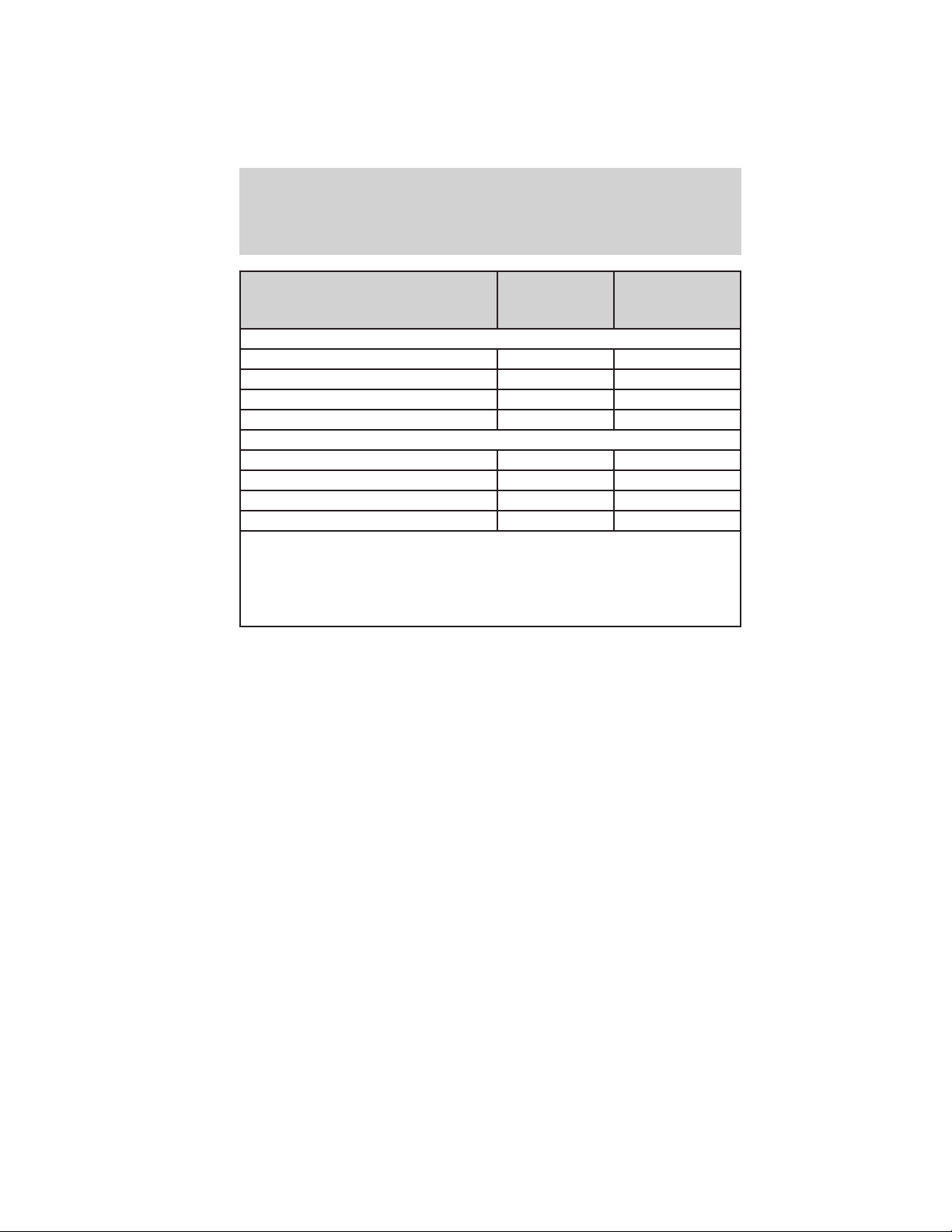Loading ...
Loading ...
Loading ...

Engine/Passengers/Trailer Class Maximum
GCWR - lb
(kg)
Maximum
Trailer Weight
- lb (kg)
FWD vehicles
3.5L/6–passenger/Class I 6870 (3116) 2000 (907)
3.5L/7–passenger/Class I 6880 (3121) 2000 (907)
3.5L/6–passenger/Class III 9910 (4495) 5000 (2268)*
3.5L/7–passenger/Class III 9920 (4500) 5000 (2268)*
4WD vehicles
3.5L/6–passenger/Class I 7050 (3199) 2000 (907)
3.5L/7–passenger/Class I 7060 (3202) 2000 (907)
3.5L/6–passenger/Class III 10125 (4594) 5000 (2268)
3.5L/7–passenger/Class III 10125 (4594) 5000 (2268)
*For towing trailers up to 3500 lb (1588 kg), use a weight-carrying
hitch and ball which uniformly spreads the trailer tongue loads through
the vehicle’s underbody structure. For towing trailers over 3500 lb
(1588 kg), up to 5000 lb (2268 kg), it is recommended to use a
weight-distributing hitch to increase front axle load while towing.
Preparing to tow
Use the proper equipment for towing a trailer and make sure it is
properly attached to your vehicle. Contact your authorized dealer or a
reliable trailer dealer as soon as possible if you require assistance.
Hitches
Do not use hitches that clamp onto the vehicle bumper; use a
load-carrying hitch. You must distribute the load in your trailer so that
10–15% of the total weight of the trailer is on the tongue, not to exceed
the maximum tongue load of 500 lb (227 kg) on a Class III receiver.
Weight-distributing hitch
When hooking-up a trailer using a weight-distributing hitch, always use
the following procedure:
1. Park the vehicle (without the trailer) on a level surface.
2. Measure the height of the top of the front wheel opening on the
fender, this is H1.
3. Attach the trailer to the vehicle without the weight distributing bars
connected.
Tires, Wheels and Loading
260
2011 Explorer (exp)
Owners Guide, 4th Printing
USA (fus)
Loading ...
Loading ...
Loading ...